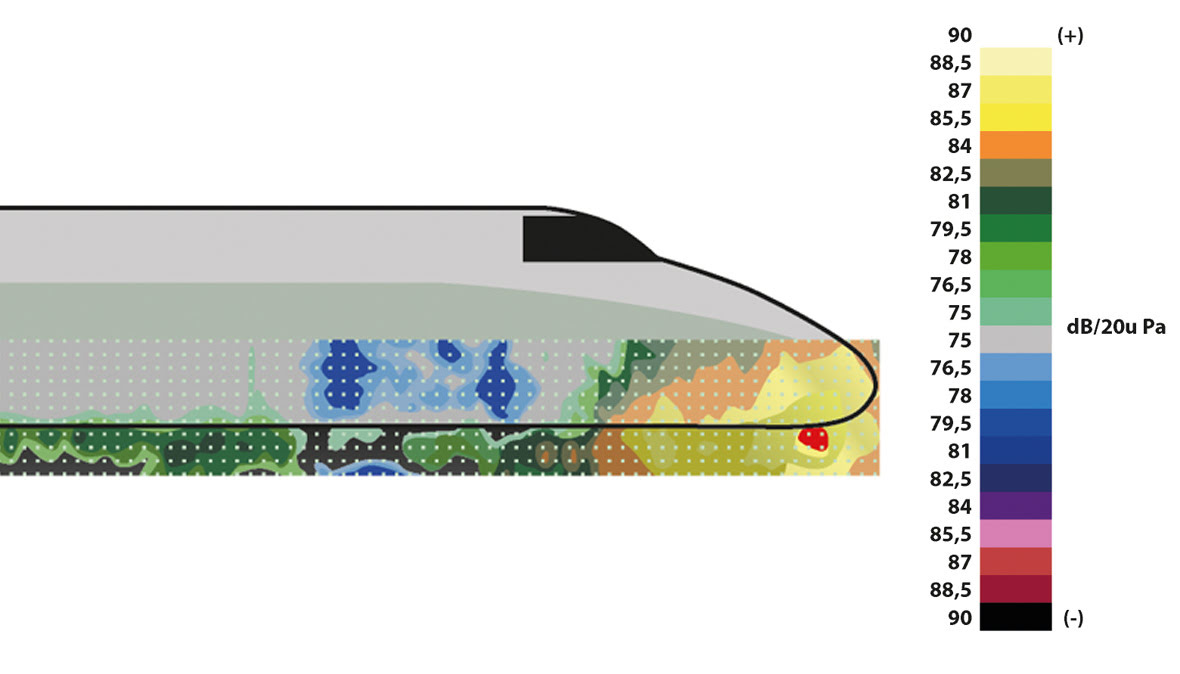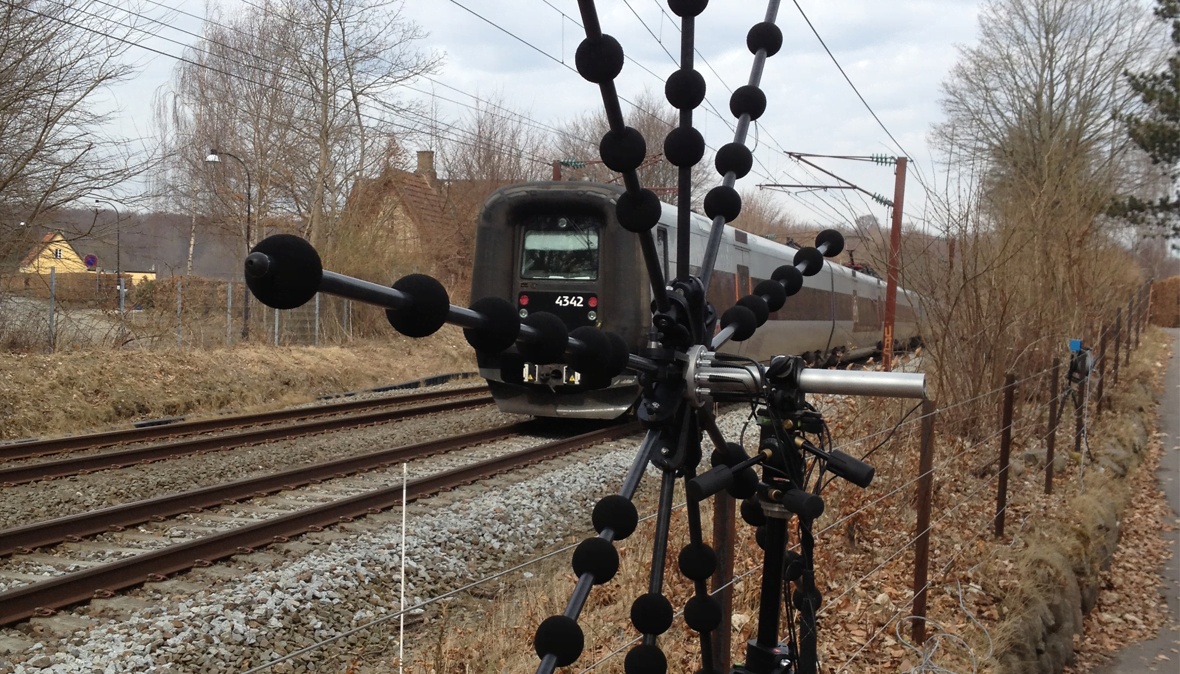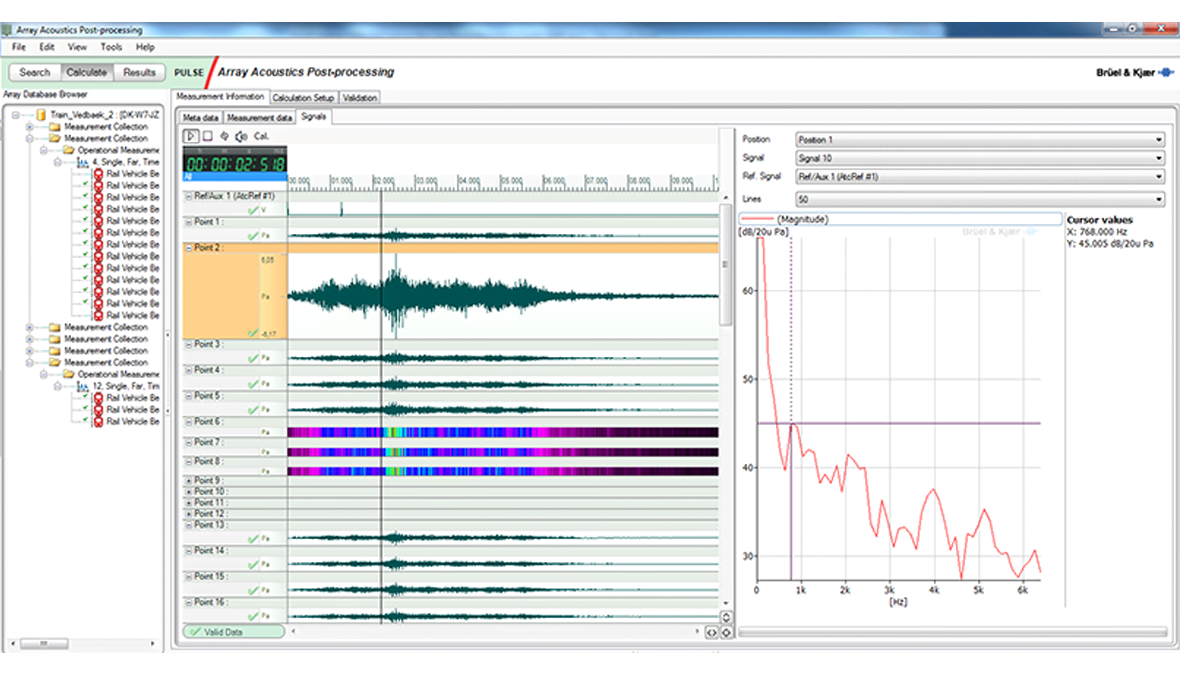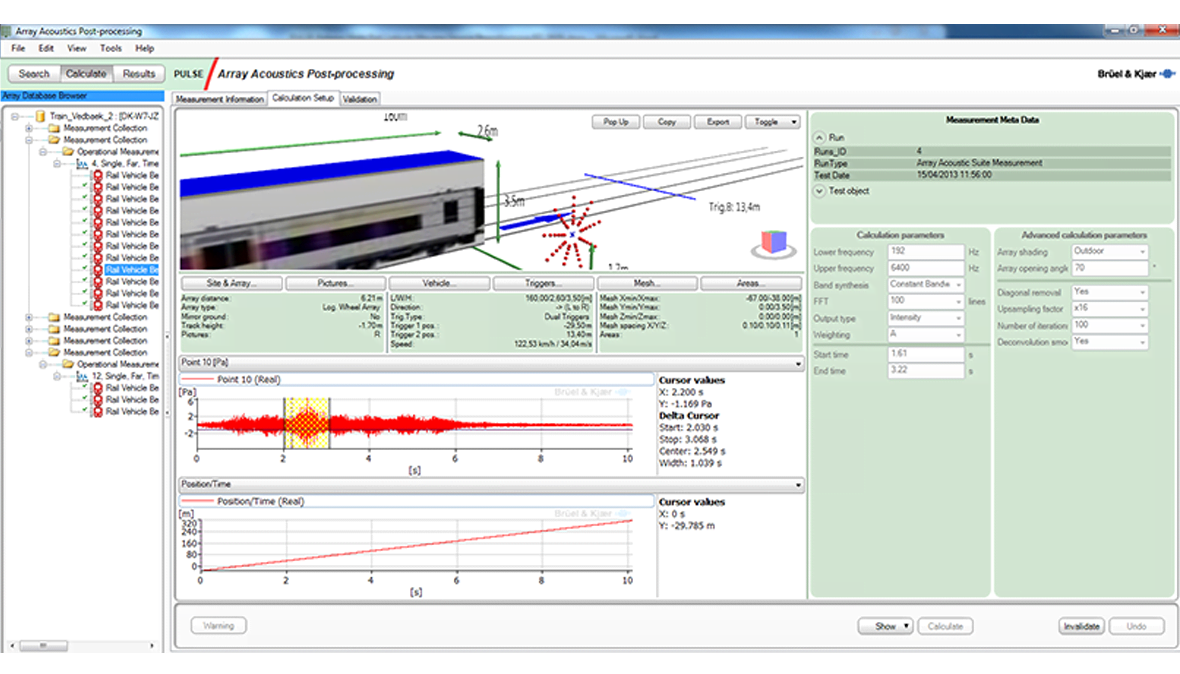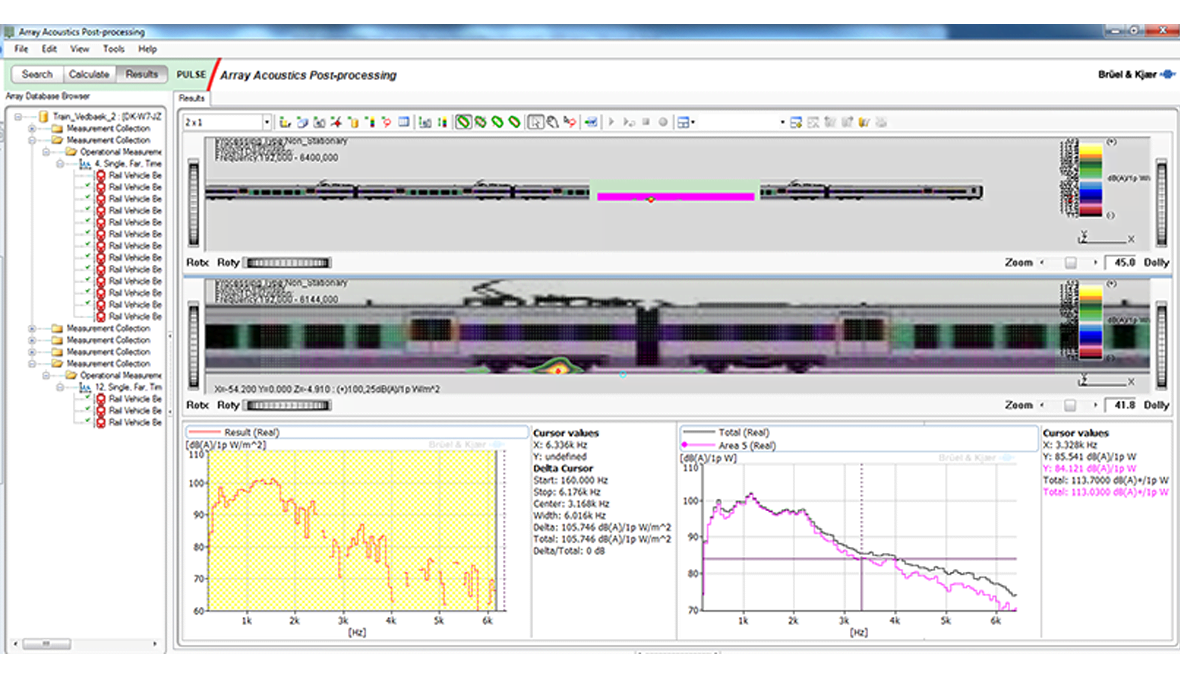BZ-5939
Rail vehicle moving source beamforming
Software for noise source location on moving rail vehicles in combination with a portable microphone array.
Solicitar ofertaThis PULSE software performs noise source location of noise radiated from moving rail vehicles such as trams and trains, using a microphone array. Acoustic results from the beamforming system are displayed in colour contour maps that clearly visualize the noise ‘hotspots’and show how noise propagates from various locations. This noise map is superimposed on a representation of the rail vehicle, so the user can clearly see the noise levels from each of the vehicle’s components, such as the nose or first bogie, and gain insights into the sound’s directivity.
USE SCENARIOS
- Trackside measurements of actual trains and metro systems in operation
- Troubleshooting during train pass-by measurements
- Analyzing and ranking noise sources to target mitigation
- Communicating sound intuitively
Mapping the whole or part of the rail vehicle enables differentiation between aerodynamic noise and rolling noise from the interaction of the wheels with the rails and rail sleepers. Smaller areas such as the pantograph can be targeted, and the contributed sound power can be calculated, thus enabling the user to easily rank the areas in order of importance. Identifying the most important sub-sources of noise such as inter-coach gangways in terms of position, frequency content and sound power radiation helps decide where design changes can most effectively reduce overall noise radiation – either reducing noise levels or optimizing their content and noise propagation.
CAPABILITIES
- Maps moving noise sources from the side of the train
- Presents acoustic maps of sound pressure, pressure contribution density and sound intensity
- Displays sound maps versus position, and pressure contribution versus position and frequency
- Presents and communicates results and ideas through tools such as AVI file
- Mapping of targets much larger than the array itself
Users can make any type of signal processing or hear any microphone signal in very high quality, thanks to the system’s high sampling rate of more than 65 kHz per channel. This also enables it to map high frequencies. This performance is especially useful for high-speed trains, for which noise source identification is an essential step towards reducing the maximum pass-by noise levels.

